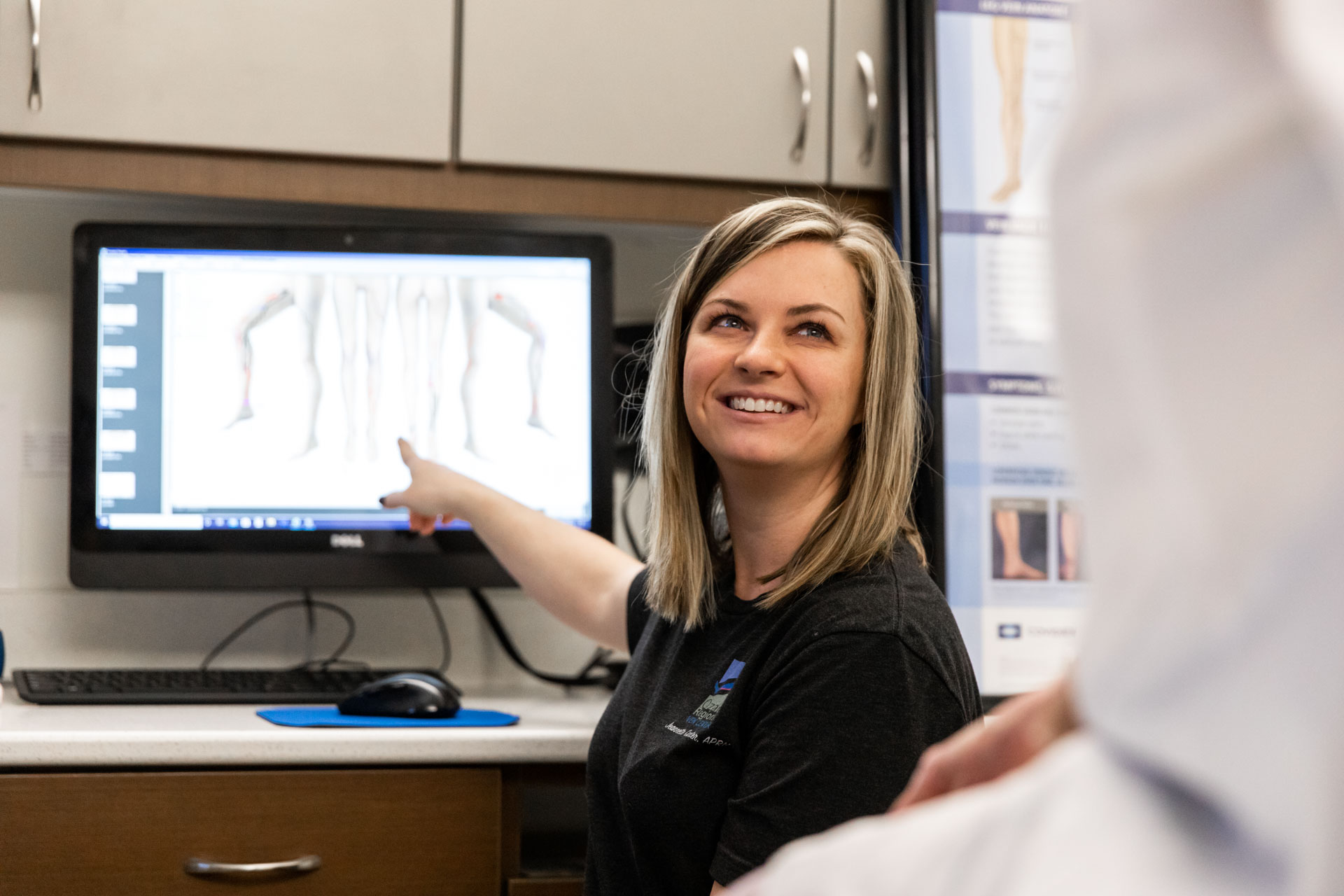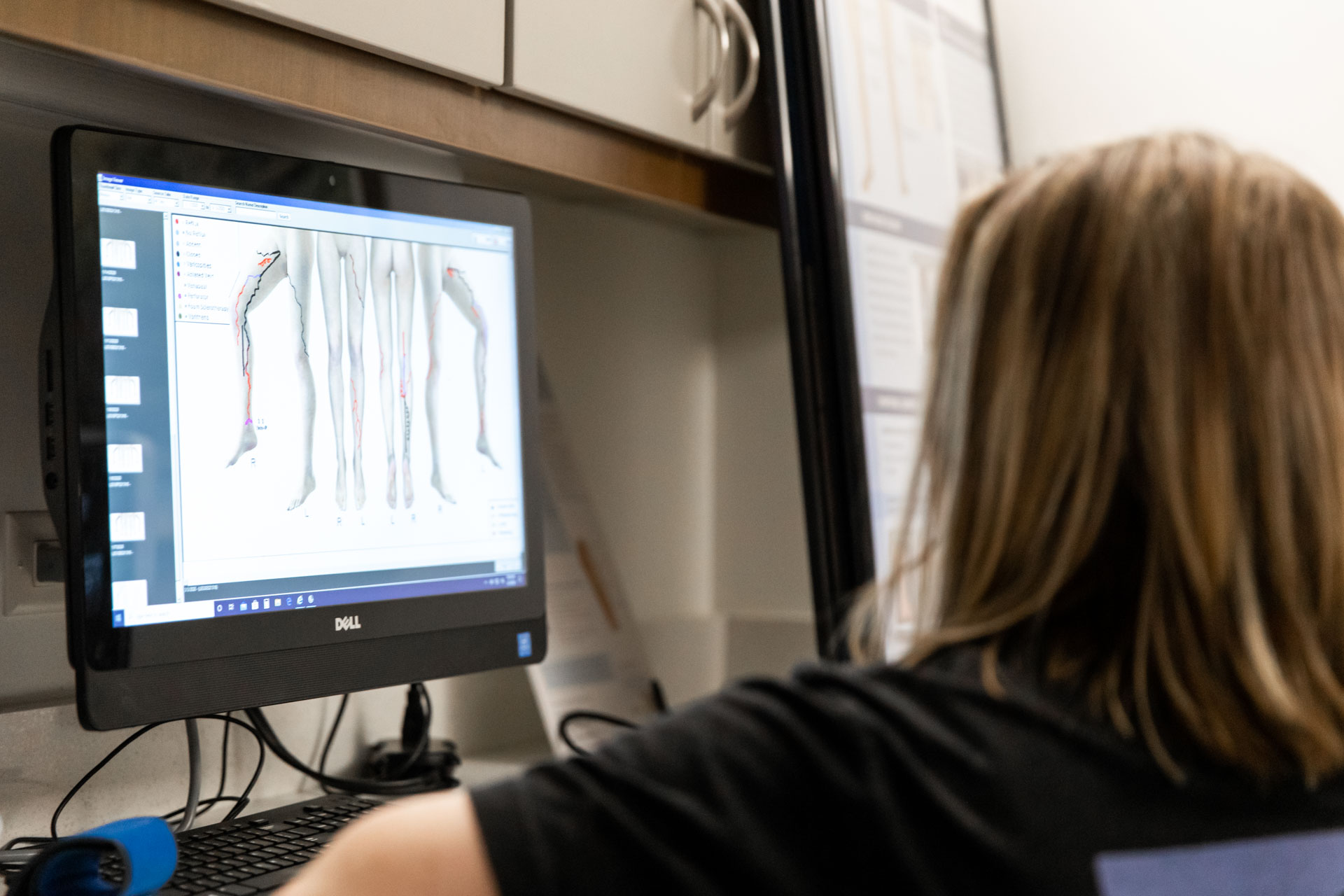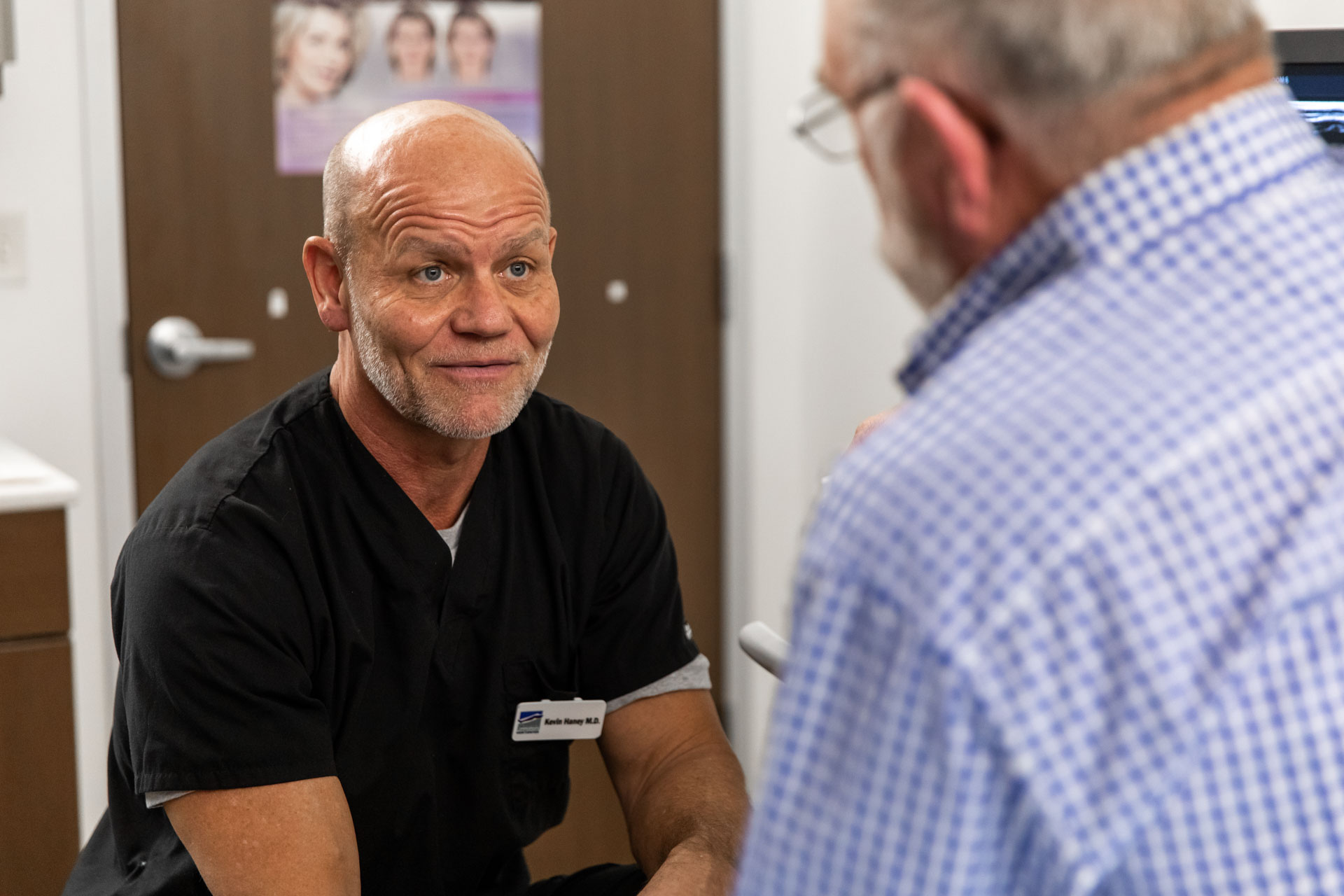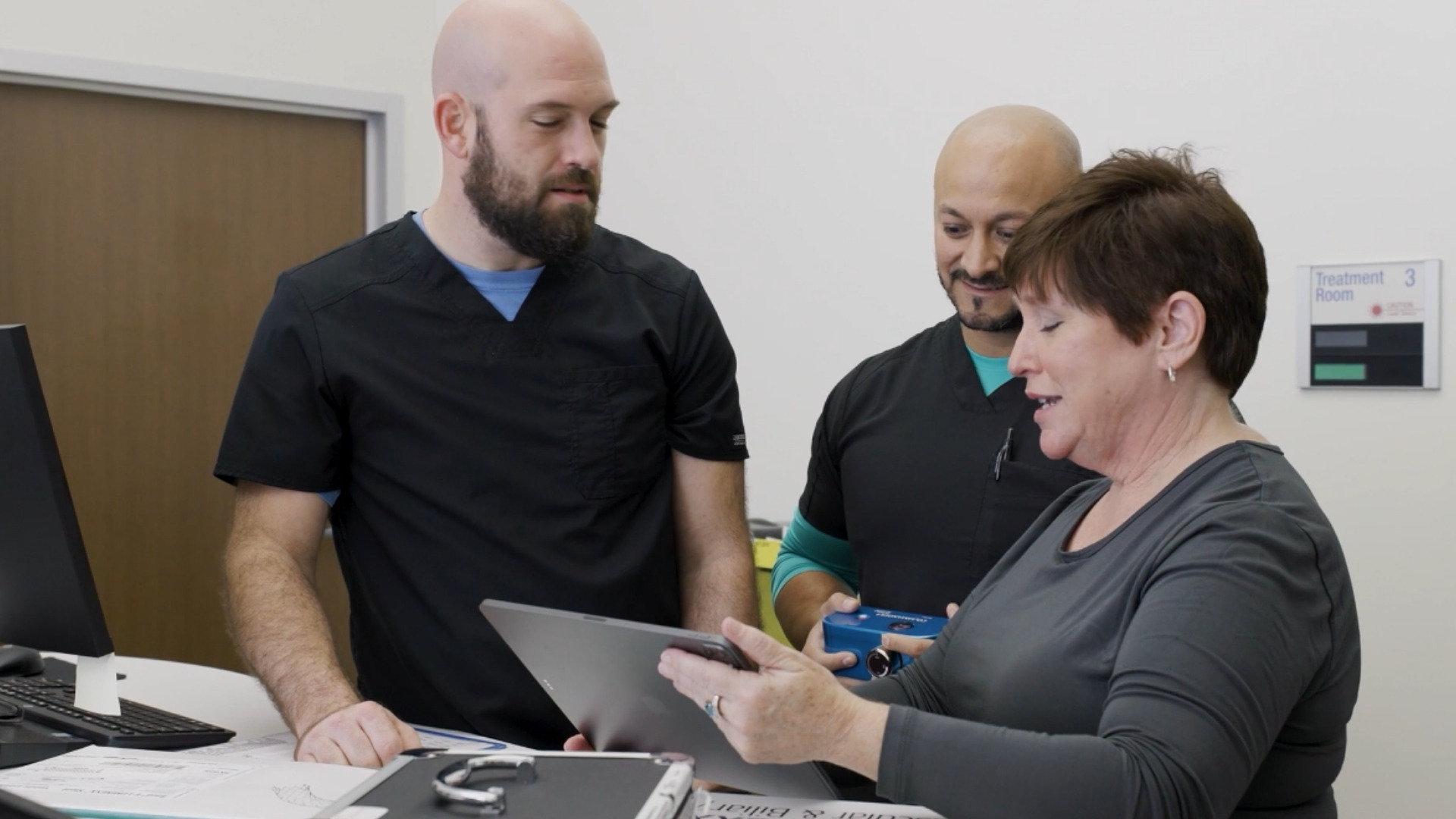Lots of people haven’t had the opportunity to learn about all the incredible developments in vascular care. This leads them to believe that vein treatments are still the painful, uncomfortable, and arduous procedures they used to be. We want to help set the record straight and provide resources for our patients to advocate for their own vascular health and dispel vein treatment myths.
So, the Ozark Regional Vein & Artery Center is here to set the record straight on the comfortable, safe, and effective wellness interventions available to patients coming to Rogers for vein care. These questions can be difficult to answer on your own, but our vein and artery clinic’s 500+ years of combined experience treating veins has made us a go-to resource for vein health and care.
What Are Vein Treatment Myths?
But our patient’s uncertainty makes sense. One of the most unnerving elements of health is not understanding what’s wrong, or how to fix it. Signs and symptoms often emerge that we don’t recognize as indicators of a problem until after it’s too late to prevent an issue. This is especially true regarding your vein health, which can take an incredible toll on your physical and mental wellbeing if left unresolved.
So, what does a problem with your veins look like? Answering that is where the vein specialists at the Ozark Regional Vein & Artery Center in Rogers come in! We have plenty of general vein care and vein health tips to keep your veins in excellent condition. Patients from all across Northwestern Arkansas, from Bentonville down to Fayetteville, come to us to receive expert vein treatment and healthcare. We even see patients from across the country who come to the clinic to receive the care they can count on.

Here are 3 common signs and symptoms that something is wrong with your veins and that you should reach out to the incredible vein specialists in Rogers here at the Ozark Regional Vein & Artery Center.
1. Night Cramps
One of the first symptoms of venous disease is leg cramping. It’s your veins’ job to transport blood back to your heart once your heart pumps it throughout your body. When your veins start failing in this task, also known as venous insufficiency, it can lead to a variety of symptoms. Leg cramping is one of the first and the most common.
The slowing or stagnant blood flow as a result of venous insufficiency can, at night when you’re laying in bed for an extended period, result in increased discomfort and site-specific pain. The exact reason for this isn’t apparent, but there is a direct correlation between the onset of night-time leg cramps and venous disease.
That said, cramping has numerous causes. Muscle overexertion, dehydration, strain, or holding a position too long–all these causes are just as likely the reason for your leg cramps.
If you’ve been on your feet all day and when you plop down for bed you notice leg pain, it’s not reasonable to immediately assume the presence of venous insufficiency. It’s essential to think critically about your body’s health. So, if you’re noticing that you’re frequently feeling leg cramps at night as you try to go to sleep, no matter what you’ve been doing, that’s something to mention to your healthcare provider or a vein specialist.
For more information, consider using our virtual vein screening tool to take an active role in your vein health!
2. Restless Legs
A frequent by-product of venous insufficiency is restless legs or Restless Leg Syndrome (RLS), often acting as a compounded version of symptomatic leg cramping. Characterized by the uncontrollable urge to shake or move your legs, RLS often manifests most acutely in the evenings and can lead to incredible difficulty falling asleep or staying asleep. RLS sufferers also report feeling tingling, itching, and pins-and-needles sensations in their legs.
Though various issues can cause RLS, not purely problems with your veins, venous insufficiency can lead to restless legs as the faltering blood valves cause blood to pool in the legs and create discomfort.
Just as with leg cramps, it’s important not to overanalyze and start seeing issues where none exist. The occasional urge to bounce or shake your leg to distract yourself or vent extra energy is normal. If the urge is significantly interfering in your life, though, you should consult your healthcare provider.
The Ozark Regional Vein & Artery Center also offers a virtual vein screening tool to schedule a consultation and take charge of your vein health.
3. Painful Varicose Veins
Varicose veins are one of the most common signs of broader venous insufficiency. Blood that’s not being pumped back to the heart begins to pool or reflux in the veins of your legs and ankles, leading to discolored, bulging varicose veins that protrude against the skin.
The CEAP (Classification, Etiology, Anatomy, and Pathophysiology) is an official standard of classification, followed by vein experts across the country, to classify the severity of your vein issues on a scale of 0-6. C0-C1 are cosmetic issues with virtually no meaningful health effects, and stages C2 and higher are more serious health concerns of increasing severity.
Even though the development of varicose veins is stage C2 of the CEAP scale, there is a common misconception that varicose veins are benign and purely a cosmetic concern. While varicose veins are a natural part of growing older and not always an immediate problem, they can cause leg pain and achiness and become an ongoing health issue if left untreated.
Check out other misconceptions about varicose veins→
Though removal isn’t always necessary, varicose veins may start forming as early as your 20s and indicate other serious issues. Thankfully, though, if you’re dealing with uncomfortable or painful varicose veins, you have a large selection of treatments for varicose veins and venous reflux with the vein specialists in Rogers at the Ozark Regional Vein & Artery Center.
The Most Common Vein Treatment Myths
There are a variety of vein treatment myths we would like to dispel, but thought it made sense to start with the 7 most common myths we hear patients discuss or ask about.

MYTH #1: Varicose veins are only cosmetic
Of course, there is a cosmetic component to varicose veins. Most of the time, they can be seen on your legs, and they may make it uncomfortable for you to wear shorts or skirts. Spider veins, contrarily, are a smaller version of varicose veins that are purely cosmetic. Varicose veins can have a significant impact on your health and how much you enjoy your life.
Varicose veins may:
- Be uncomfortable or painful cause swelling
- Discolor your skin
- Cause swelling in your legs
- Increase your risk of blood clots
MYTH #2: Only women and/or the elderly get varicose veins
Close to a third of all adults have varicose veins. While it’s true they do occur more commonly in women, men can have varicose veins as well. And, while the risk of developing varicose veins does increase with age, even young adults can develop them.
MYTH #3: Surgery is the only treatment option for varicose veins
If your grandmother had varicose veins, surgery was the only option for her. But now, there are minimally invasive varicose veins treatment options available for those who wish to treat their varicose veins. Yes, surgery is still an option and may be preferred in certain situations, but there are several minimally invasive approaches available:
Sclerotherapy – A sclerosing, or scarring, agent is mixed with air and injected into the vein. This closes off the vein and redirects the blood flow away from the varicose veins.
Endovenous ablation – This uses heat to destroy the vein from the inside and then redirects blood towards other, healthier veins.
Microphlebectomy – Several small incisions, 2 – 3 mm or about 1/10 of an inch, are made in the skin to remove superficial veins. This is often performed along with an endovenous treatment. i
MYTH #4: Treatment for varicose veins is painful
The traditional surgery for varicose veins can involve a painful recovery, but many patients report healing faster and with less pain after undergoing a minimally invasive treatment. iii
MYTH #5: Treatments are only for cosmetic purposes
It’s true that treatments currently available will likely improve the appearance of your legs, but your other symptoms, including discomfort, heaviness, and swelling, often get better with treatment as well. ii
MYTH #6: The veins will always come back after treatment
Varicose veins will not always come back after treatment. The risk of them returning is somewhat higher after surgery, but the minimally invasive techniques available today actually have a lower risk of recurrence. ii
MYTH #7: Insurance does not pay for varicose vein treatment
This may or may not be true, depending on your plan and coverage. You should contact your health insurance provider to see if treatments for varicose veins are covered. Many insurance plans cover treatment if you’re experiencing pain, swelling or bleeding.
Improving Your Vein Health
Though some of the above symptoms may seem dire, there’s a lot you can do without involving a vein specialist to improve your vein health and prevent the worst of these symptoms.

After all, conservative care and vein-health consciousness play a massive part in preventative care for vascular diseases and circulatory weakness. So if you are noticing some of these symptoms, with enough work and the right support systems, you can get better.
So what is there for you to do? Our advice is simple but can be pretty tricky to implement: take care of your body.
What does that mean, exactly?
We’re glad you asked! It means making vein-healthy choices. Like making sure not to smoke, consuming less salt, watching your blood pressure and cholesterol levels, and losing weight where necessary.
Thankfully, much of the stress we place upon our circulatory system is, with attention, easily fixed. Though some patients don’t have a say in the matter due to underlying issues, for most people your vein care is up to you.
Making health-conscious choices can be the difference between a robust, healthy circulatory system and unwanted pain and achiness managed through repeated vein treatments.
If you’re looking for more specific steps you can take to improve your vein health, here are a few activities you can do to improve venous insufficiency and overall circulation:
- Exercise. Exercising is a great way to improve venous insufficiency, as it gets blood flowing which can mitigate blood pooling in your veins. Walking and cardiovascular exercise are especially beneficial.
- Wear compression stockings. Compression socks or stockings apply constant light pressure to your legs, gently forcing blood up the veins in your legs through the applied pressure. Compression stockings may help alleviate the blood reflux that leads to discomfort.
- Elevate your legs. Elevating your legs while sitting down can naturally help the blood flow toward the heart, as your veins won’t have to work against gravity. This can improve circulation and lessen blood reflux in your legs.
Note: It’s important to remember that none of these behaviors should replace consulting a healthcare provider or vein specialist if you are worried about your vascular health.
Learn more about conservative management for leg veins →
If You Need Support, See the Vein Specialists In Rogers
Now that these vein treatment myths have been debunked, you may be interested in further exploring your options for treatment. And if you think you have varicose veins, but haven’t yet talked with your doctor, make an appointment today.
If you’ve been dealing with vascular issues for any period of time, and your care has fallen through the cracks, come to the Ozark Regional Vein & Artery Center in Rogers. Whatever your vein issue, we will guide you toward lasting wellness solutions that will leave you happier and healthier.

The Ozark Regional Vein & Artery Center is the premier practice in Northwest Arkansas for all the highest-quality vein treatments available. Dr. Haney and the expert staff at the Ozark Regional Vein & Artery Center in Rogers have over 75 years of combined experience in the industry. Patients come to Dr. Haney from all over Northernwestern Arkansas, from Fayetteville to Bentonville, to ensure they receive the best concierge-level care and leg vein procedures available.
After all, helping people is what we do, and it is our mission to provide the people of Northwestern Arkansas and beyond with the absolute best care possible. Our expertise and focus on patient education help us to achieve tangible results every time.
Take the first step on the road to recovery with our Virtual Vein Screening Tool or by scheduling a consultation. We also hold regular free screening events. Sign up for our newsletter to be notified of our free public events and other practice specials!

